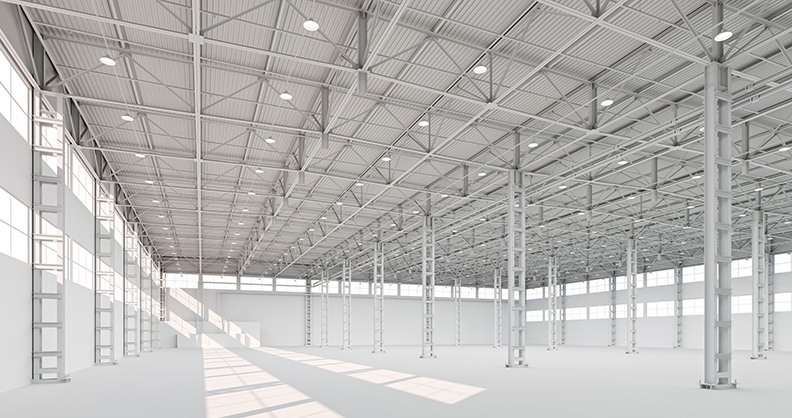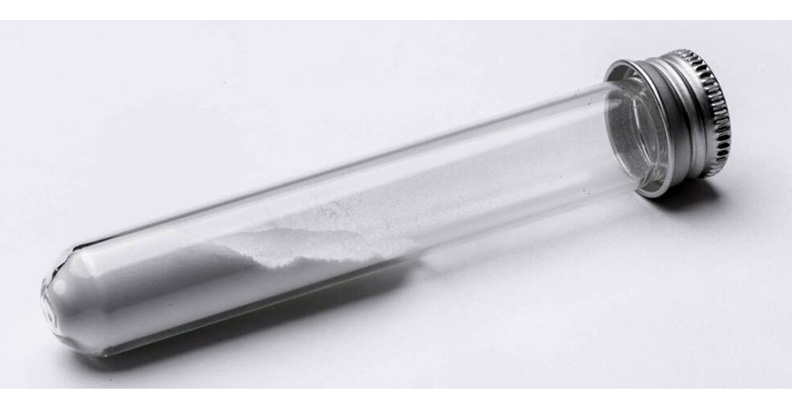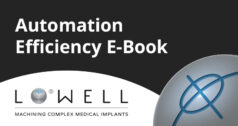
Orthopedic implants and medical instruments are subject to some of the most stringent quality standards in the medical industry. Any material defect or malfunction can have catastrophic consequences for a patient.
As a result, medical component manufacturers demand precise, repeatable finishing results. Component surfaces must be ground, smoothed and polished without changing their required shape and functionality to promote hygiene, sterilization and strength. Therefore, it is essential to understand the differences among finishing processes and technologies and the best application of their use.
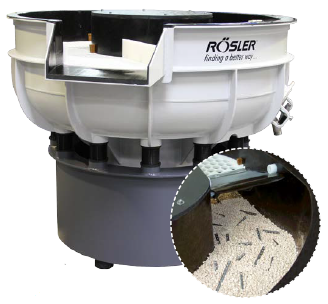

The wider, side view of this R 620 Euro rotary vibrator is shown along with an inset of workpieces and media inside the machine.
Vibratory Finishing
Rotary or trough vibrators are commonly used to process medical components. By allowing the components or work pieces to be completely embedded and freely float in the grinding/polishing media, the media acts as a cushion against part-on-part contact.
This also ensures an all-around surface finish without having to mount the parts on special work piece fixtures. Only very delicate implants require such fixtures.
Ideal work pieces for vibratory finishing include, but are not limited to:
- Cast or forged implant raw parts
- Medical and dental instruments
- Prosthetic components
- Bone plates
- Bone nails
- Bone screws


Knee femoral components are often processed in a drag finishing machine. In this case, four spindles hold three work pieces each to allow the processing of 12 knee femorals simultaneously without the risk of part-on-part contact.
Drag Finishing
In the case of more delicate work pieces, such as implants which should not touch each other during the grinding process, special fixtures are utilized in drag finishers. These fixtures attach to workstations on spindles which are immersed and dragged through a work bowl filled with grinding or polishing media.
This technique allows for multiple work pieces to be thoroughly finished simultaneously without the risk of them damaging each other.
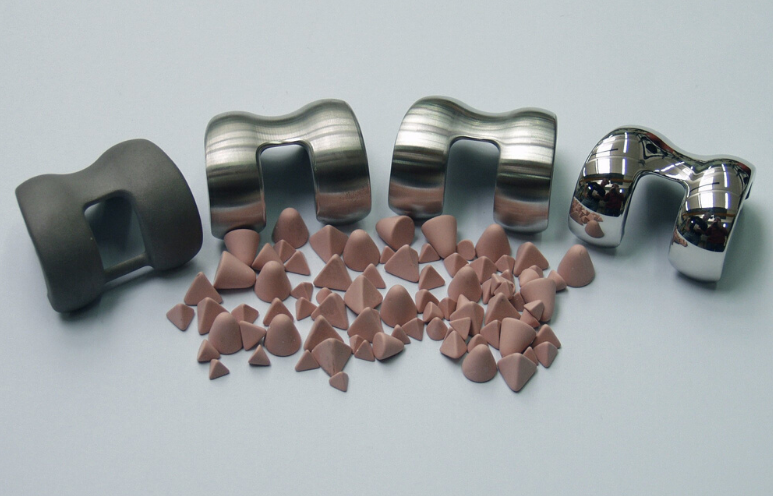

Knee femorals are shown in different finishing stages from casting, grinding, and pre-polishing to the final polishing along with the media mix used.
Advantages & Ideal Applications
Whether achieved through vibratory or drag finishing, the grinding and polishing process has two significant advantages; it does not require costly and time-consuming equipment programming (as with a robot), and above all, it offers absolute process consistency.
Ideal work pieces for drag finishing include, but are not limited to:
- Knees – femoral and tibial components
- Hips – stems and ball joints
- Ankle devices
- Shoulder devices
- Medical and dental instruments
- Prosthetic components
- Dental forceps
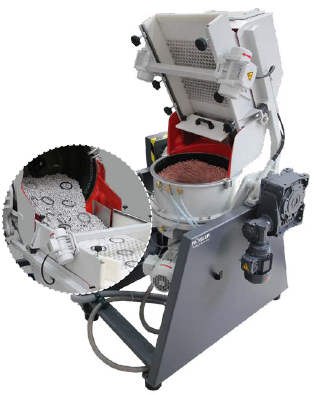

An FKS E/SA centrifugal disc finishing machine is shown with an inset of the separation tray in use.
Centrifugal Disc Finishing
For processing particularly small, detailed parts, a centrifugal disc finishing machine with highly intensive, fluid media and part movement is the suggested method/process.
This method is particularly useful for:
- Compression and pedicle screws
- Dental implants
- Dental screws
- Hand and elbow plates
- Femur screws
- Stents
- Vertebral implants
- Small bone plates
Guidebooks & Resources
From choosing the right material to attaining the required surface finish, processing orthopedic implants and instruments requires insight and expertise. Rosler Metal Finishing offers guidebooks to illustrate all of the considerations that go into selecting a surface finishing partner and process.
• Surface Finishing Guidebook – Trauma Implants
• Surface Finishing Guidebook – Medical Instruments
• Surface Finishing Guidebook – Orthopedic Implants – Coming later this summer; sign up for the blog notifications to be notified when it is available.
The Rosler Blog also offers tips and insight regarding surface finishing. There you can search for topics of interest to you or sign up for enews alerts.
Bernhard Kerschbaum is the CEO of Rosler Metal Finishing USA, part of the Rosler Group. With more than 80 years of surface finishing expertise, Rosler is uniquely capable of “Finding a better way…” as its motto states.



